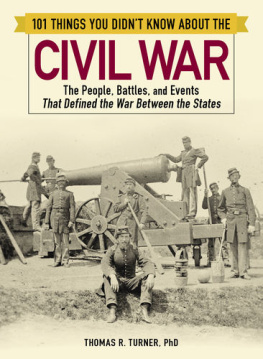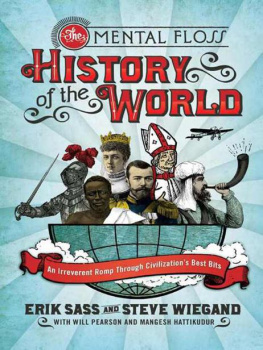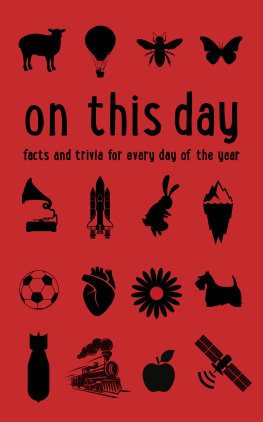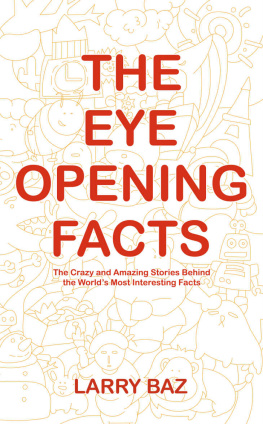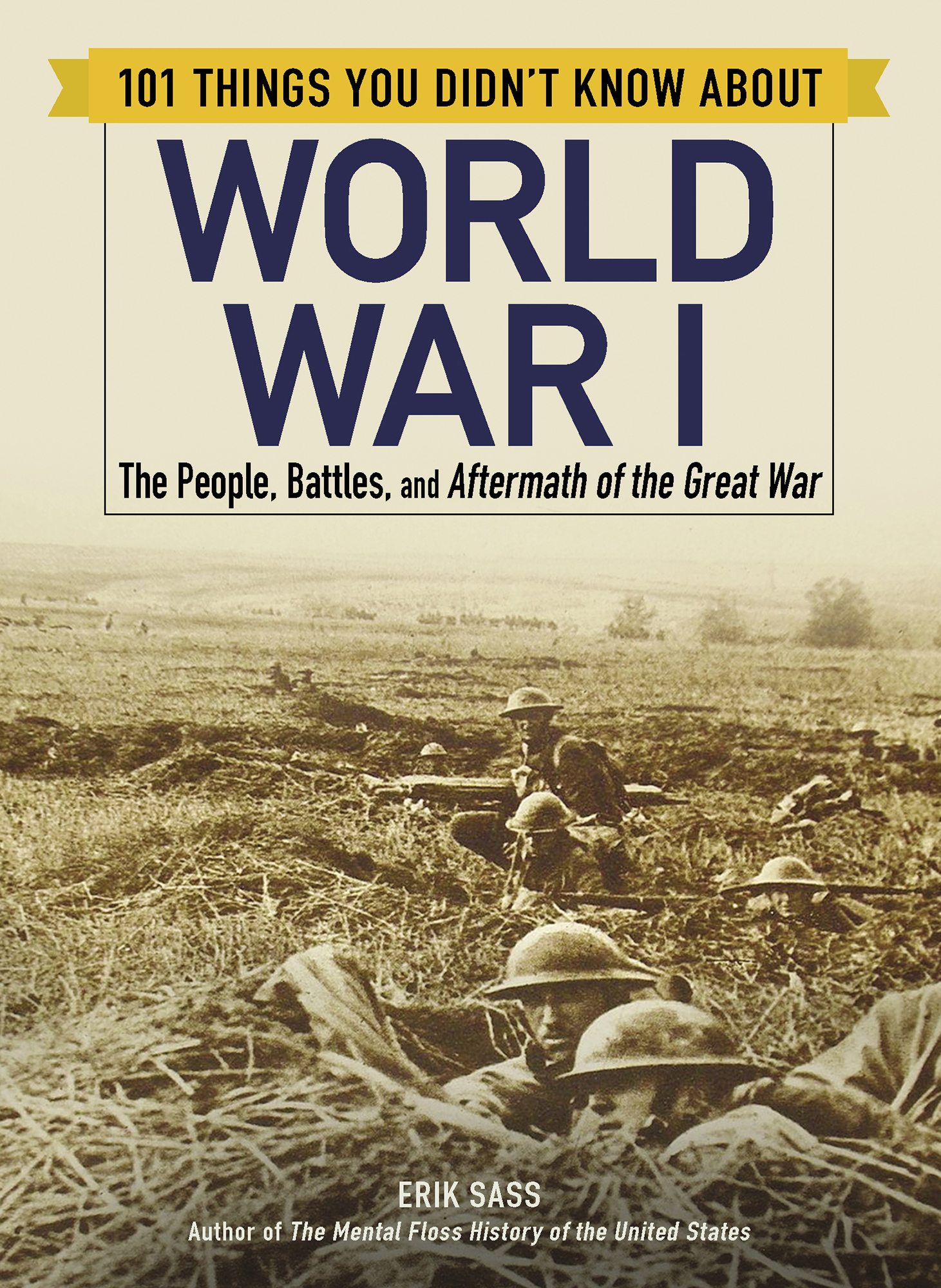Contents
Guide

Adams Media
An Imprint of Simon & Schuster, Inc.
57 Littlefield Street
Avon, Massachusetts 02322
www.SimonandSchuster.com
Copyright 2018 by Simon & Schuster, Inc.
All rights reserved, including the right to reproduce this book or portions thereof in any form whatsoever. For information address Adams Media Subsidiary Rights Department, 1230 Avenue of the Americas, New York, NY 10020.
First Adams Media trade paperback edition September 2018
ADAMS MEDIA and colophon are trademarks of Simon & Schuster.
For information about special discounts for bulk purchases, please contact Simon & Schuster Special Sales at 1-866-506-1949 or .
The Simon & Schuster Speakers Bureau can bring authors to your live event. For more information or to book an event contact the Simon & Schuster Speakers Bureau at 1-866-248-3049 or visit our website at www.simonspeakers.com.
Interior images by Eric Andrews
Cover design by Erin Alexander
Cover photograph by Moore, William E.; Russell, James C. [Public Domain], Via Wikimedia Commons
Library of Congress Cataloging-in-Publication Data
Sass, Erik, author.
101 things you didnt know about World War I / Erik Sass, author of The Mental Floss History of the United States.
Avon, Massachusetts: Adams Media, 2018.
Series: 101 things.
Includes index.
LCCN 2018011465 | ISBN 9781507207222 (pb) | ISBN 9781507207239 (ebook)
Subjects: LCSH: World War, 1914-1918. | World War, 1914-1918--Campaigns.
Classification: LCC D521 .S335 2018 | DDC 940.3--dc23
LC record available at https://lccn.loc.gov/2018011465
ISBN 978-1-5072-0722-2
ISBN 978-1-5072-0723-9 (ebook)
Many of the designations used by manufacturers and sellers to distinguish their products are claimed as trademarks. Where those designations appear in this book and Simon & Schuster, Inc., was aware of a trademark claim, the designations have been printed with initial capital letters.
INTRODUCTION
From 19141918, Europes Great Powers, supposedly representing the height of human progress, tore themselves to pieces with all the destructive power of modern weaponry. They left 12 million soldiers and 8 million civilians dead, plus millions more mutilated or disabled. The war swept away old ways of life, introducing a strange modern world of mechanization and mass culture. At home, total war meant total mobilization of society; millions of women and children marched off to work as men marched off to the trenches.
In many ways were still living in the shadow of the First World War. Thats why its so important that we understand what happened and why.
101 Things You Didnt Know about World War I explores that question: What happened? How could ordinary people suddenly lapse into an orgy of hate-fueled killing? Along the way well discover the personalities who directed the war on both sides as well as learn about the people who fought and died in it.
Before we begin, though, we need to know how the stage was set for this great conflict.
Historical Background
While its impossible to reduce such a complex event as World War I to a single cause, one thing stands out: nationalism. Starting in the fifteenth century nationalism became a motivating force in peoples lives. People needed a shared identity and story. Nationalism, a new emotional force, drew on shared language, ethnicity, legends, and achievements to reassure people they were still part of something bigger than themselves. The nation would endure, remember them, and take care of their children after they were gone; in return, theyd embrace and fight for their country.
Nationalism spread across Europe and later the world, often encouraged by rulers looking for ways to unite and motivate their subjects. However, it could also disrupt things: after the French Revolution, French nationalism under Napoleon Bonaparte overturned the European order, and later Europes delicate balance of power was upset by the formation of two new nation-states, Germany and Italy.
Germanys fast-growing population and industrial power intimidated Britain and France, who were nervous about its plans to build a great navy and compete with them for colonies; the French also resented the loss of Alsace-Lorraine, provinces on the border of France annexed by Germany in 1871. Their fears prompted France to form an alliance with Russia and cooperate with Britain. The Germans felt they were being encircled.
At the same time a new wave of nationalism in Eastern Europe and the Balkans threatened the old empires there: Austria-Hungary, Russia, and the Ottoman Empire. Ethnic groups trapped in the old medieval realms wanted out. The Ottoman Empire in particular was on its last legs, as various peoples in the Balkans threw off the Turkish yoke and established new nations.
But Balkan borders were far from stable: in the First and Second Balkan Wars, 19121913, the new nations fought first the Ottoman Empire and then each other for its remaining European territories. Even worse, Austria-Hungary (which already faced internal nationalist movements) waded deeper into this explosive situation by annexing Bosnia-Herzegovina, an old Ottoman province, in 1908.
Many Bosnian Serbs would rather have joined the neighboring Slavic kingdom of Serbia. Austria-Hungary was determined to destroy Serbian nationalism before it tore the empire apart. But there was one big problem: Serbia was backed up by Russia, traditional patron of the Slavic kingdoms in the Balkan Peninsula.
Between Germanys fear of encirclement and its ally Austria-Hungarys fear of rising nationalism, by 1914 Europe was ready to explode. All it needed was someone to light a match.
Timeline of the First World War
1914
June 28: Bosnian Serb nationalist Gavrilo Princip assassinates Archduke Franz Ferdinand, heir to the throne of Austria-Hungary, in Sarajevo
July 5: Austro-Hungarian diplomat Count Alexander von Hoyos visits Berlin, receives blank checka promise Germany will back Austria-Hungary no matter what
July 23: Austria-Hungary delivers an ultimatum to Serbia containing demands certain to be rejected, providing an excuse for war
July 2427: European diplomats try to defuse mounting tension without success
July 28: Austria-Hungary declares war on Serbia
July 29: Last-ditch compromise, British proposal for a Halt in Belgrade, rejected by Austria-Hungary
July 30: Russia mobilizes against Austria-Hungary and Germany
August 1: Germany declares war on Russia
August 3: Germany declares war on France, invades neutral Belgium
August 4: Britain declares war on Germany, imposes naval blockade
August 14: French invade Germany but are repulsed in Battle of the Frontiers
August 17: Two Russian armies invade East Prussia
August 20: Germans occupy Brussels
August 30: Russian Second Army is destroyed at Battle of Tannenberg
September 610: German invasion of France fails at the Miracle on the Marne
September 1113: Germans dig in at Aisne, beginning trench warfare

